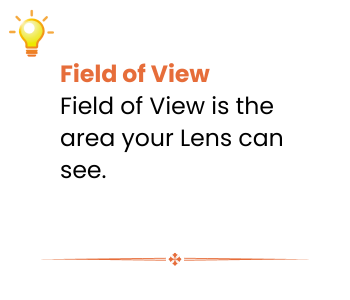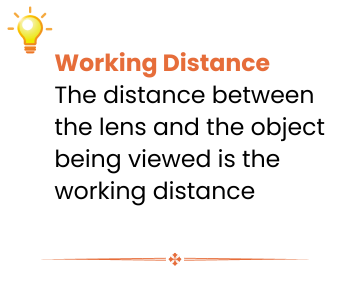Common Mistakes While Selecting a Tabletop Magnifier
Tabletop magnifiers are incredibly useful tools for various purposes, including inspection tasks, detailed work, soldering and circuit work which requires magnification. However, when selecting a tabletop magnifier, people make several common mistakes. Here are some of those mistakes:-
1. Neglecting the Magnification Power: Every magnifier does not have an equal magnification level. The magnification depends on the application of the work. Some people make the mistake of selecting a magnifier with either too low or too high magnification power. It is essential to understand the required level of detail you need to see in your application and choose the magnifier accordingly.
 2. Ignoring the Quality of Lens: The lens quality affects the clarity of the image. Lower-quality lenses might have distortions that can strain the eyes and give an inaccurate view of the object. People often opt for cheaper models with subpar lenses, hindering productivity and accuracy.
2. Ignoring the Quality of Lens: The lens quality affects the clarity of the image. Lower-quality lenses might have distortions that can strain the eyes and give an inaccurate view of the object. People often opt for cheaper models with subpar lenses, hindering productivity and accuracy.
3. Overlooking the Light Source: A built-in light source can greatly enhance visibility, especially in poor lighting conditions. However, not all tabletop magnifiers come with a light source; some forget to consider this feature.
 4. Not considering the Field of View: A larger field of view is generally better, as it allows for viewing larger objects or a large portion of an object. However, a trade-off between a field of view and magnification level often exists.
4. Not considering the Field of View: A larger field of view is generally better, as it allows for viewing larger objects or a large portion of an object. However, a trade-off between a field of view and magnification level often exists.
5. Design of the Magnifier: Depending on the type of work, a freestanding, clamping, or articulated arm design might be most appropriate. The design can significantly affect the ease and comfort of use, so consider this aspect carefully.
6. Size of the Lens: The lens’s size can play a crucial role, Depending on the product size or component being tested. Large lenses offer a wider field of view, which is essential when dealing with large components, while smaller lenses may suffice for smaller components
7. Buying Based on Price Alone: While sticking to a budget is important, choosing the cheapest option can often lead to inferior performance and longevity. Balancing cost with the other factors outlined here is important to find the best magnifier.
8. Disregarding Durability: Industrial environments can be harsh, and people often need to pay more attention to the build quality and durability of the magnifier. A magnifier should be sturdy, resistant to industrial contaminants, and have a good-quality adjustment mechanism for regular use.
 9. Choosing the Wrong Working Distance: Some people select magnifiers without considering the working distance. If the distance is too short or too long, it could lead to discomfort and reduced efficiency.
9. Choosing the Wrong Working Distance: Some people select magnifiers without considering the working distance. If the distance is too short or too long, it could lead to discomfort and reduced efficiency.
10. Ignoring Ergonomics: If the Tabletop magnifier is to be used longer, it should be comfortable. Some people need to consider features like adjustable height, angle of view, or the inclusion of a stand that can make using the magnifier much more comfortable and reduce strain.
11. Diopter Count: The diopter count of a lens determines how much it magnifies. Generally, the higher the diopter count, the more the lens magnifies. Be sure to choose a magnifier with the appropriate diopter count.
12. Ease of Movement: In some cases, it might be necessary to move the magnifier frequently, so it should be lightweight and portable.
By being aware of these common mistakes, you will be able to make an informed decision while selecting a tabletop magnifier, ensuring that it meets your needs and provides lasting value.




